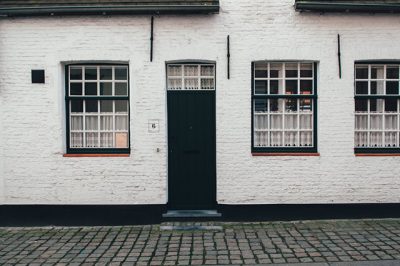A Simple Guide For Painting Walls, Windows, And Doors The Right Way
Can anyone paint a room? Yes, anyone is capable of painting a room, and it can look very appealing. But, another question comes in, how good will it look? Will it be satisfying? The answer to these issues will automatically be no because they can paint but they can’t reach a professional goal.

- Sand the wall, trim, and door.
Before starting to sand, you can first clean it. Cleaning can be done using soap solution and a piece of rag to remove any dust and grease on the walls that may alter the final appearance. Wait until it dries up. Now that they are clean, you can start by sanding wood works first. Do this using a 120-grit sandpaper. Fill nail holes with a filler, wait until they dry and sand again.
On edges and corners, you can use a sanding sponge, enabling you to reach all surface as it can merge into any shape. After sanding, do not forget to dust the surfaces again using a dry rag.
- Apply the prime.
First, tape the regions you may not want the paint to get on them. The ends of the sticker should extend up to where the trim meets the wall and protect areas of the trim where paint should not reach. Now you can apply your prime. Note that bare walls need an oil-based primer. Wood surfaces also need priming so that other coats can adhere well. You can now leave the primer for at least 12 hours to dry. Sand using 220-grit sandpaper gently and dust again.
- Check grooves.
If they are cracks or holes in the wall, you can get rid of them using a filling compound. Wait for the mixture to dry well. Then sand that area and prime it.
- Fill the joints.
It is necessary to fill the spaces found between wood works and the wall using a caulk gun. Just put enough caulk on the joints. Too much caulk wills results to bumps between the wall and wood works.
You can first start by painting the ceiling. Sink a two-inch brush into the paint ensuring only a third of the brush bristles coated with paint. Run the brush along the ends of the roof. Continue applying the paint straight until you finish all sides. Clean the paint that landed on the wrong spot. After cleaning, you can now paint your ceiling entirely using a roller that has a log handle. Dip the roller into the paint. Roll it to ensure that you equally cover the roller with paint. Roll the paint onto the ceiling starting from a corner. Without removing the roller, fill all patches. Continue adding paint to the roller until the whole ceiling is painted.
Painting wood works also follow a simple procedure. Apply the first coat on the wood works and wait until it dries up. Sand it using a 220-grit sandpaper and dust. Paint the final layer. Windows and doors cannot be painted using the same procedures and try as much as possible to prevent paint from reaching the glass.
The last step is painting the walls. When the wood works are completely dry, you can tape their edges to protect them from wall paint. Also using a two-inch brush, apply paint to the door and window trim, ceiling and edges of wood works. Using an extended roller paint the wall top to the bottom. Make sure to cover all empty patches. Continue adding paint to the roller until the entire wall is painted.
Remember to remove protecting tapes when the paint is still wet, thus helps to avoid removing patches of paints when it dries.
Read More




